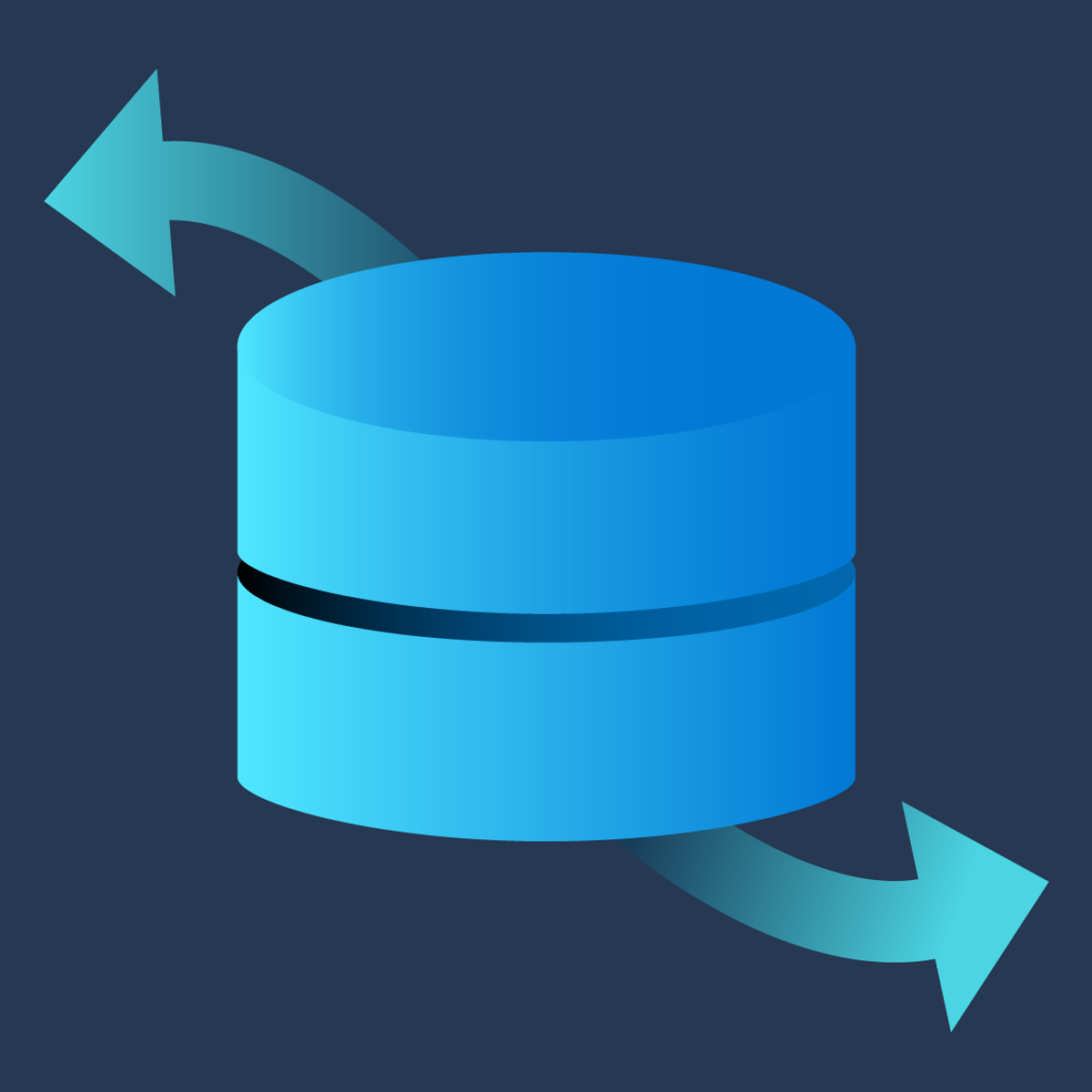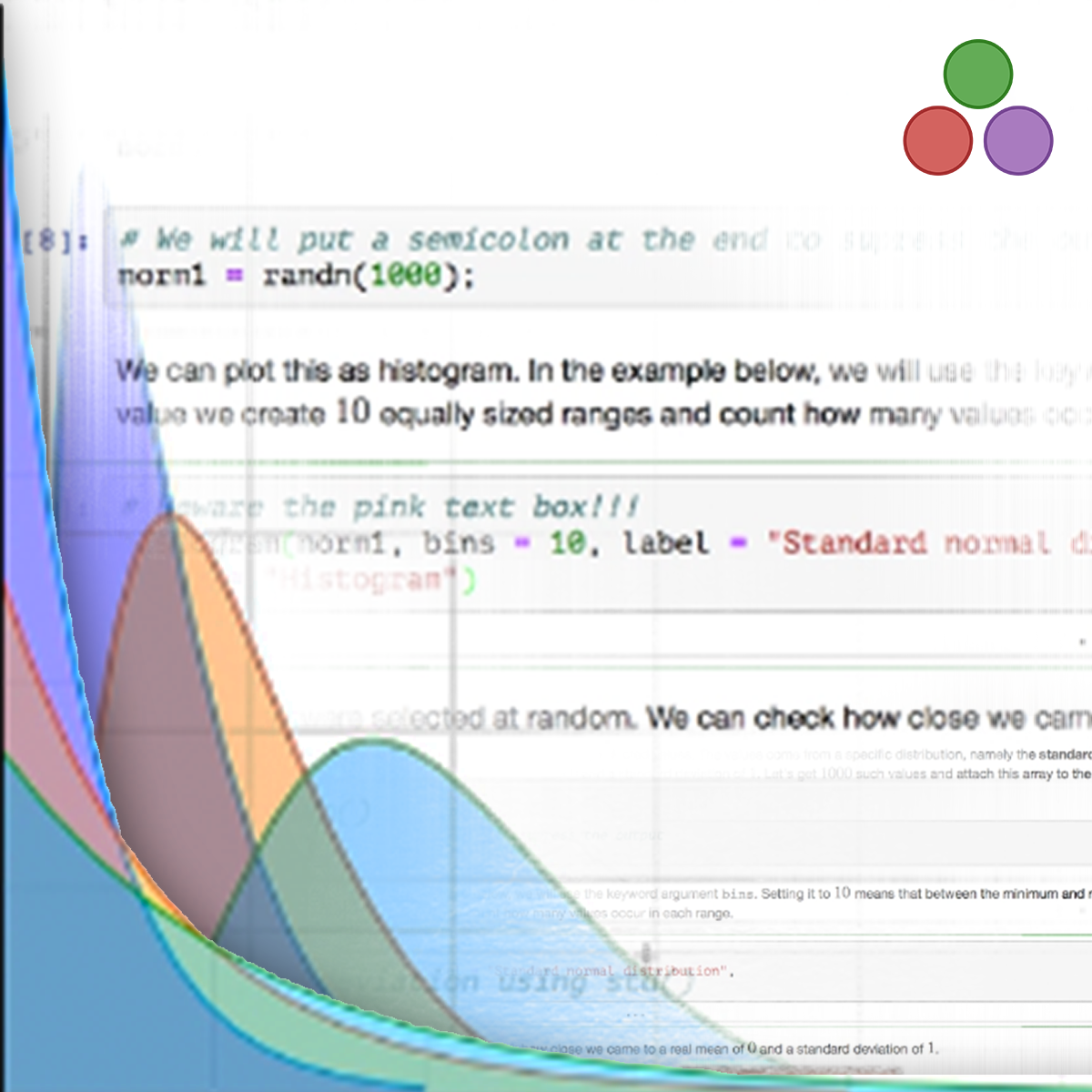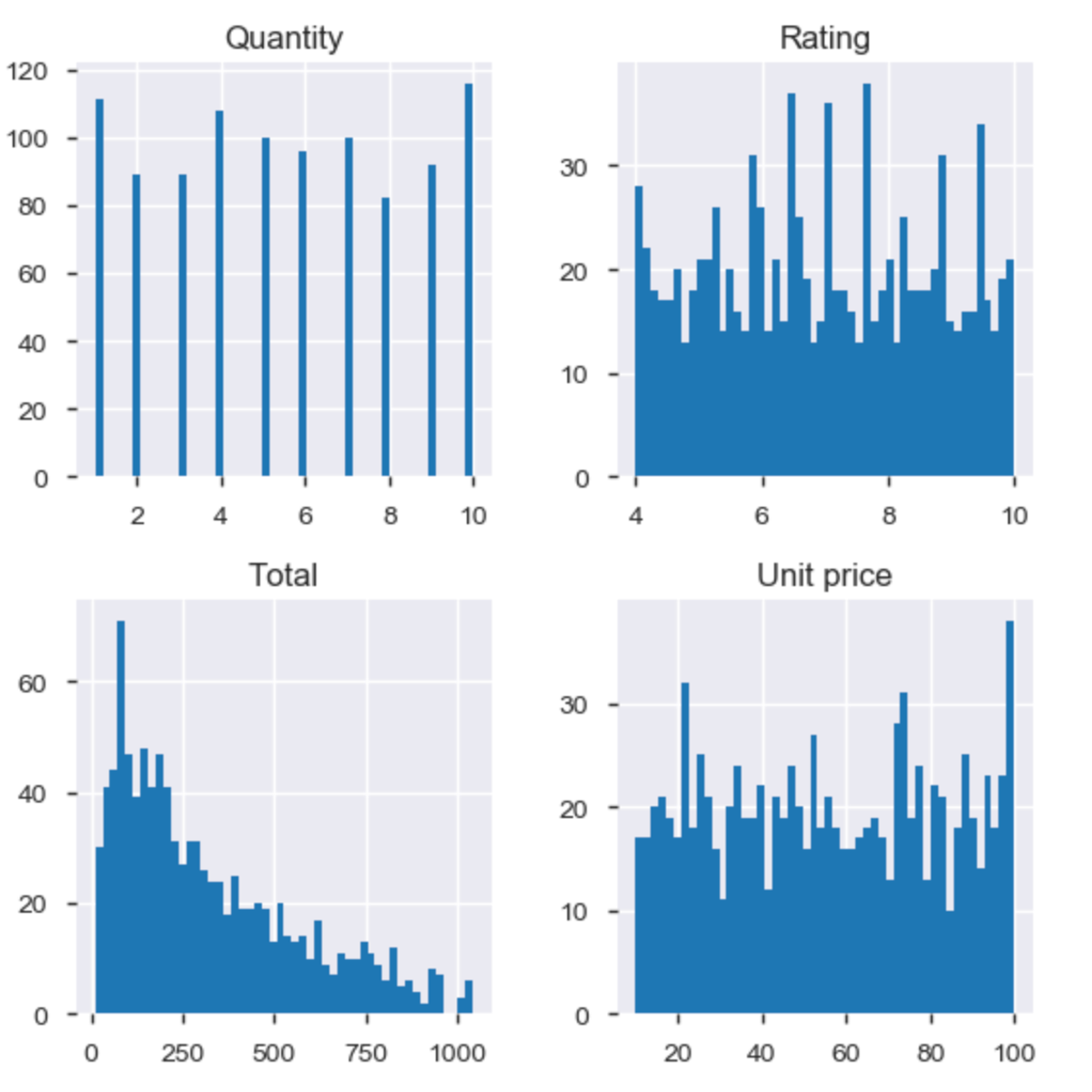Back to Courses









Data Analysis Courses - Page 98
Showing results 971-980 of 998

Foundations: Data, Data, Everywhere
This is the first course in the Google Data Analytics Certificate. These courses will equip you with the skills you need to apply to introductory-level data analyst jobs. Organizations of all kinds need data analysts to help them improve their processes, identify opportunities and trends, launch new products, and make thoughtful decisions. In this course, you’ll be introduced to the world of data analytics through hands-on curriculum developed by Google. The material shared covers plenty of key data analytics topics, and it’s designed to give you an overview of what’s to come in the Google Data Analytics Certificate. Current Google data analysts will instruct and provide you with hands-on ways to accomplish common data analyst tasks with the best tools and resources.
Learners who complete this certificate program will be equipped to apply for introductory-level jobs as data analysts. No previous experience is necessary.
By the end of this course, you will:
- Gain an understanding of the practices and processes used by a junior or associate data analyst in their day-to-day job.
- Learn about key analytical skills (data cleaning, data analysis, data visualization) and tools (spreadsheets, SQL, R programming, Tableau) that you can add to your professional toolbox.
- Discover a wide variety of terms and concepts relevant to the role of a junior data analyst, such as the data life cycle and the data analysis process.
- Evaluate the role of analytics in the data ecosystem.
- Conduct an analytical thinking self-assessment.
- Explore job opportunities available to you upon program completion, and learn about best practices in the job search.

Business Metrics for Data-Driven Companies
In this course, you will learn best practices for how to use data analytics to make any company more competitive and more profitable. You will be able to recognize the most critical business metrics and distinguish them from mere data.
You’ll get a clear picture of the vital but different roles business analysts, business data analysts, and data scientists each play in various types of companies. And you’ll know exactly what skills are required to be hired for, and succeed at, these high-demand jobs.
Finally, you will be able to use a checklist provided in the course to score any company on how effectively it is embracing big data culture. Digital companies like Amazon, Uber and Airbnb are transforming entire industries through their creative use of big data. You’ll understand why these companies are so disruptive and how they use data-analytics techniques to out-compete traditional companies.

Getting Started with R
In this 2 hour-long project, you will learn the basics of R programming language. In addition, you will take your first steps in the use of R programming language for Data Analysis.
By the end of this 2-hour long project, you will understand how to use the R GUI called R studio. By extension, you will learn the different data types and data structures used in R. Finally, you will learn how to install packages and how to import data sets into the R studio work space.
This course is aimed at learners who are looking to get started with the R programming language. There are no hard prerequisites and any competent computer user should be able to complete the project successfully.

Exploratory Data Analysis for the Public Sector with ggplot
Learn about the core pillars of the public sector and the core functions of public administration through statistical Exploratory Data Analysis (EDA). Learn analytical and technical skills using the R programming language to explore, visualize, and present data, with a focus on equity and the administrative functions of planning and reporting. Technical skills in this course will focus on the ggplot2 library of the tidyverse, and include developing bar, line, and scatter charts, generating trend lines, and understanding histograms, kernel density estimations, violin plots, and ridgeplots. These skills are enhanced with lessons on best practices for good information visualization design. Upon completing this course, you will understand the layered grammar of graphics and its implementation in ggplot2, all while exploring a diverse set of authentic public datasets.
All coursework is completed in RStudio in Coursera without the need to install additional software.
This is the second of four courses within the Data Analytics in the Public Sector with R Specialization. The series is ideal for current or early-career professionals working in the public sector looking to gain skills in analyzing public data effectively. It is also ideal for current data analytics professionals or students looking to enter the public sector.

Data Storage in Microsoft Azure
Azure provides a variety of ways to store data: unstructured, archival, relational, and more. In this course, you will learn the basics of storage management in Azure, how to create a Storage Account, and how to choose the right model for the data you want to store in the cloud.
This course part of a Specialization intended for Data engineers and developers who want to demonstrate their expertise in designing and implementing data solutions that use Microsoft Azure data services anyone interested in preparing for the Exam DP-203: Data Engineering on Microsoft Azure (beta).
This is the second in a program of 10 courses to help prepare you to take the exam so that you can have expertise in designing and implementing data solutions that use Microsoft Azure data services. The Data Engineering on Microsoft Azure exam is an opportunity to prove knowledge expertise in integrating, transforming, and consolidating data from various structured and unstructured data systems into structures that are suitable for building analytics solutions that use Microsoft Azure data services. Each course teaches you the concepts and skills that are measured by the exam.
By the end of this Specialization, you will be ready to take and sign-up for the Exam DP-203: Data Engineering on Microsoft Azure (beta).

Python for Genomic Data Science
This class provides an introduction to the Python programming language and the iPython notebook. This is the third course in the Genomic Big Data Science Specialization from Johns Hopkins University.

Julia Scientific Programming
This four-module course introduces users to Julia as a first language. Julia is a high-level, high-performance dynamic programming language developed specifically for scientific computing. This language will be particularly useful for applications in physics, chemistry, astronomy, engineering, data science, bioinformatics and many more. As open source software, you will always have it available throughout your working life. It can also be used from the command line, program files or a new type of interface known as a Jupyter notebook (which is freely available as a service from JuliaBox.com).
Julia is designed to address the requirements of high-performance numerical and scientific computing while also being effective for general-purpose programming. You will be able to access all the available processors and memory, scrape data from anywhere on the web, and have it always accessible through any device you care to use as long as it has a browser. Join us to discover new computing possibilities. Let's get started on learning Julia.
By the end of the course you will be able to:
- Programme using the Julia language by practising through assignments
- Write your own simple Julia programs from scratch
- Understand the advantages and capacities of Julia as a computing language
- Work in Jupyter notebooks using the Julia language
- Use various Julia packages such as Plots, DataFrames and Stats
The course is delivered through video lectures, on-screen demonstrations, quizzes and practical peer-reviewed projects designed to give you an opportunity to work with the packages.

Marketing Analytics with Meta
This course explores Meta Marketing Analytics Tools. You’ll learn how the advertising platform works and you’ll learn to create ads using Meta Ads Manager. Then, you’ll learn how Meta reports results and how you can customize the reports to match your business goals. You’ll also learn how you can use Meta experiments to evaluate the effectiveness of your advertising campaign. You’ll learn to optimize ads with A/B testing and you will explore how you can integrate data from Meta campaigns in marketing mix modeling. In this course, you’ll also find a summary of Meta’s recommended approach to data analysis.
By the end of this course you will be able to:
• Describe how an ad is created and delivered in Meta Ads Manager
• Evaluate campaign results
• Conduct an A/B Test
• Evaluate advertising effectiveness with Conversion Lift Tests
• Evaluate advertising effectiveness with Brand Lift tests
• Choose the best approach to evaluating advertising effectiveness given a scenario
• Explain how and when to apply Marketing Mix Modeling
• Choose the best approach to optimizing your marketing mix given a scenario
• Implement a full analysis process from the formulation of a hypothesis to recommending measurement solutions, performing an analysis, generating insights and presenting results and recommendations
This course is for people who want to learn how to use Meta Ads Manager to conduct advertising effectiveness tests and evaluate their campaign results.
Learners don't need marketing or data analysis experience, but should have basic internet navigation skills and be eager to participate. Ideally, learners have already completed course 1 (Marketing Analytics Foundation), course 2 (Introduction to Data Analytics), course 3 (Statistics for Marketing), and course 4 (Data Analytics Methods for Marketing) in this program.

Supply Chain Analytics
Welcome to Supply Chain Analytics - the art and science of applying data analytics to assess and improve supply chain performance!
A supply chain is a complex system with conflicting objectives of cost efficiency and customer satisfaction. Supply chain management is becoming increasingly data driven. Through the real-life story and data of a major US telecommunication company, you will learn the analytics tools / skills to diagnose and optimize a supply chain. Upon completion of this course, you will be able to
1. Use data analytics to assess the impact of various strategies on all aspects of a supply chain, from inventory, shipping, to warehouse order fulfillment, store operations and customer satisfaction.
2. Customize the supply chain strategy by product to improve the overall cost efficiency without sacrificing customer service.
3. Obtain hands-on experience on the application and financial impact of analytics in integrated supply chain and logistics planning.
VASTA (name disguised) is a major wireless carrier in the US selling cell phones through a national network of retail stores. Recently, it wrote off a huge amount of obsolete inventory each year and was suffering a significant cost inefficiency in an increasingly stagnant market. VASTA must assess the competitive environment, and renovate its supply chain to stay competitive. At the end of this course, you will help VASTA save $billions on supply chain cost and retain its leadership in a stagnant and saturated market.
I hope you enjoy the course!

Exploratory Data Analysis With Python and Pandas
In this 2-hour long project-based course, you will learn how to perform Exploratory Data Analysis (EDA) in Python. You will use external Python packages such as Pandas, Numpy, Matplotlib, Seaborn etc. to conduct univariate analysis, bivariate analysis, correlation analysis and identify and handle duplicate/missing data.
Note: This course works best for learners who are based in the North America region. We’re currently working on providing the same experience in other regions.
Popular Internships and Jobs by Categories
Browse
© 2024 BoostGrad | All rights reserved


